



by Steven Nyland, OrganicCrops. Posted on 01 June 2017, 08:03 hrs
There is no doubt about it, Lucuma is the most popular flavor in Peru. Ice cream, biscuits, cakes, sweets, milk-shakes, all powered by the delicious caramel and maple flavor of this bright deep-yellow/orange Peruvian fruit. The Incas used dried Lucuma fruit as a natural sweetener, which is why it is often called "gold of the Inca’s" by Peruvians.
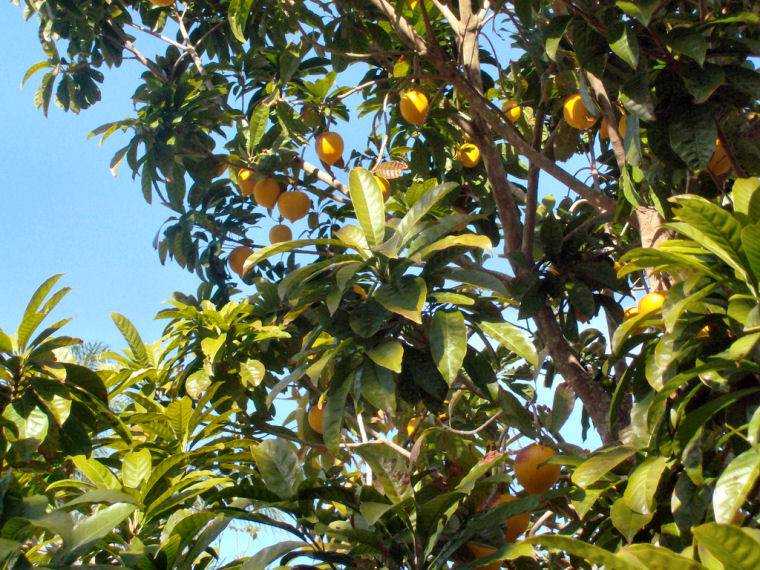 The sub-tropical fruit grows on trees, 5-8 meters tall, at an altitude of 2000-3000 msl. The trees prefer cooler over tropical climate and therefore Lucuma is often cultivated in valleys of the he Andean low mountain ranges. The trees flower and fruit year round. A single adult tree produces up to 300 fruit. Over 100 improved lineages have been identified in Peru.
The sub-tropical fruit grows on trees, 5-8 meters tall, at an altitude of 2000-3000 msl. The trees prefer cooler over tropical climate and therefore Lucuma is often cultivated in valleys of the he Andean low mountain ranges. The trees flower and fruit year round. A single adult tree produces up to 300 fruit. Over 100 improved lineages have been identified in Peru.
It is still a mystery where and how Lucuma originated. But in Peru we have a legend, told mainly In the village of Aguamiro in Huanuco and the village of Chiquian in Ancash. According to the legend: “Centuries ago, a goddess named Rukma lived in the Andean Alto Plano. The beautiful Rukma (synonym for strong and proud woman) rejected every man who proposed to her. Especially Huatio, a local priest and considered 'father of agriculture', who looked dirty in ragged clothing.
One afternoon during a hot summer day in the lower mountains of the Andes, Rukma rested in the shade of a Lugma tree. After she fell asleep, Huatio appeard in the form of a bird and dropped a fruit in her lap. The fruit carried the semen of Huatio. After Rukma ate the fruit, she got pregnant and after 9 months she delivered a healthy boy.
After a few years passed, Rukma was feeling ashamed of not knowing who fathered her son. One day, she decided to gather all the man at the center square of the village. The men were eager to comply as Rukma was still beautiful and radient as before.
After all men had gathered at the square, her little boy immediately ran to Huatio and hugged him like only a son would hug his father. Rukma face went red with shame and she ran from the square as fast as she could. Shortly after she fled to the high mountains where she remained the rest of her life.”
In the Quechuan language, Rukma is is synomym to lucuma, or as Quechuan speakers say "Fruto del lúcumo"
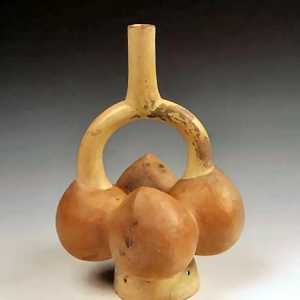 According to research carried out by the Museo Nacional de Arqueolog??a, Antropolog??a e Historia del Per?? (National Museum of the Archeology, Anthropology, and History of Peru) lucuma fruit dates back all the way to 1,500 BC. Archaeological research places its domestication in the lower Andean valleys of the pre-Inca cultures, where the consumption of lucuma fruit and the use of the wood of the lucuma tree are documented. In 1938 a trunk of carved ??wood from a lucuma tree was found as a totemic figure in the sanctuary of Pachac??mac.
According to research carried out by the Museo Nacional de Arqueolog??a, Antropolog??a e Historia del Per?? (National Museum of the Archeology, Anthropology, and History of Peru) lucuma fruit dates back all the way to 1,500 BC. Archaeological research places its domestication in the lower Andean valleys of the pre-Inca cultures, where the consumption of lucuma fruit and the use of the wood of the lucuma tree are documented. In 1938 a trunk of carved ??wood from a lucuma tree was found as a totemic figure in the sanctuary of Pachac??mac.
Many ancient Moche relics were found that represent lucuma as a food and fruit. The Larco museum in Lima exhibits several pieces, with the most famous one being a bottle cap with 4 lucuma's together (see photo).
The Spanish conquerors had little interest in Lucuma as it was seen as "indigenous food of the local Indians". Nowadays Lucuma is enjoyed all over the world, either as fresh fruit, as a natural sweetener, or as a flavor in sweets and dessert products.
Lucuma fruit is a bit unusual. The flesh is a bit dry, fibery with the consistency of a hard-boiled egg yolk. In early days, British traders called it egg fruit. After you peel off the thin green skin the first thing you notice is the delicious sweet-maple smell and butter-scotch caramel taste.
Lucuma is high in antioxidants, vitamin B3, carotene, niacin, calcium, dietary fiber, protein, and essential minerals.
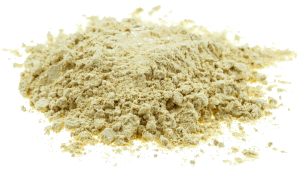 Lucuma powder is made from the pulp of the Lucuma fruit. After harvest, the fruit is left to ripe for 4-10 days. Once ripe, the fruit is first washed before it is peeled and cut into pieces. The Lucuma pieces are then dehydrated at a temperature of maximum 45 degrees Celsius to preserve flavor, color and odor. After a quick cooling-off the dehydrated Lucuma pieces are pulverized to create Lucuma powder.
Lucuma powder is made from the pulp of the Lucuma fruit. After harvest, the fruit is left to ripe for 4-10 days. Once ripe, the fruit is first washed before it is peeled and cut into pieces. The Lucuma pieces are then dehydrated at a temperature of maximum 45 degrees Celsius to preserve flavor, color and odor. After a quick cooling-off the dehydrated Lucuma pieces are pulverized to create Lucuma powder.
Lucuma is great for people on a low fat/low sugar diet as it very low in fat and sugars. It is low on the glycemic index which makes lucuma powder an ideal sweetener without the sugar kick.
Lucuma powder is an ideal product to flavor and sweeten all kinds of dishes. Here are some of our favorties:
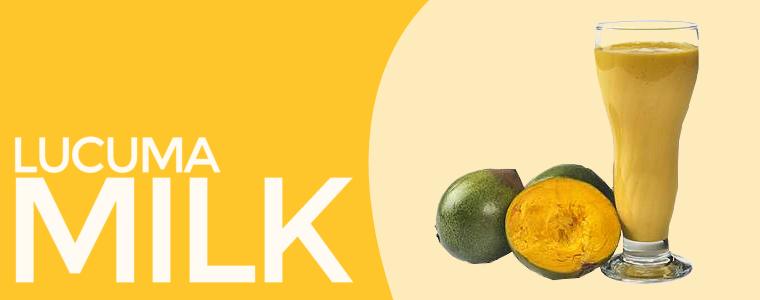
Nutrition facts: 172.1 Calories per serving
This healthy yummie milkshake is sold in most juice bars in Lima, Peru. It is often served in a large glass. In Peru they often use fresh lucuma, but you get the same result with lucuma powder.
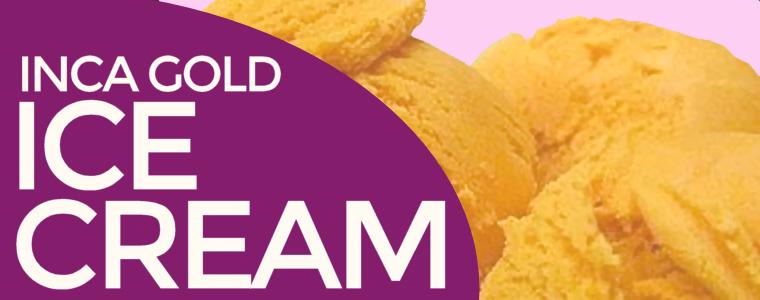
Nutrition facts: 284.8 Calories per serving
Lucuma Ice cream with nuts and honey. Everybody will love this. The recipe is based on a 'light' version, e.g. not using any cream. To create a lavish lucuma ice cream, substitute 1/2 liter of milk with cream. If you're not a fan of honey you may substitute it with organic sugar.
What to do with the left-over egg whites you say? Have a look at the next recipe: lucuma merinques, or use them for an egg-white omelet.
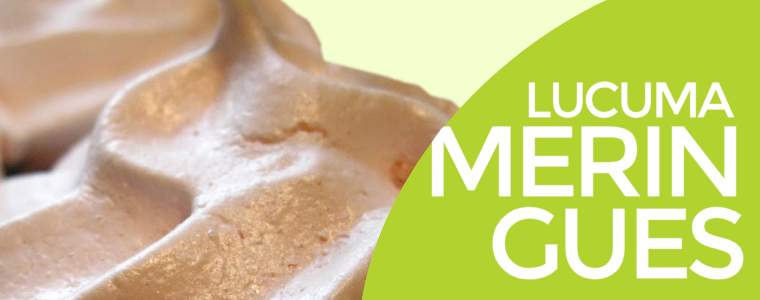
Nutrition facts: 311.2 Calories per serving
Lucuma meringues go very well with Inca gold lucuma ice cream. These yummie Meringue have a semi-sweet lucuma flavor. You can cut the amount needed in half to make 20-22 large Meringue or 30-35 small ones.
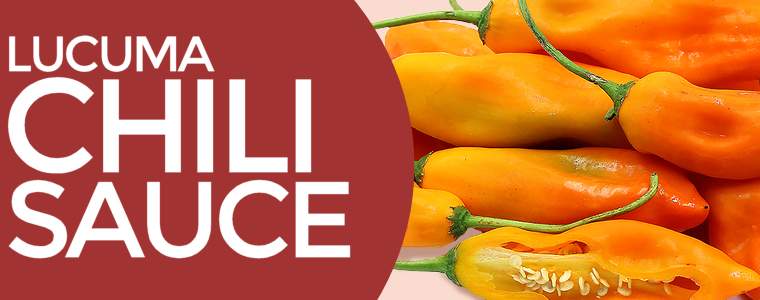
Nutrition facts: 12 Calories per serving
A fruity, flaming hot chili sauce that tastes of the Peruvian Amazon Rainforest. Leave in the seeds of the chili's to make it even hotter or remove the seeds and heart/stem to go for a mild-hot sauce. Great on steaks, BBQ or anything to needs a lot of kick.